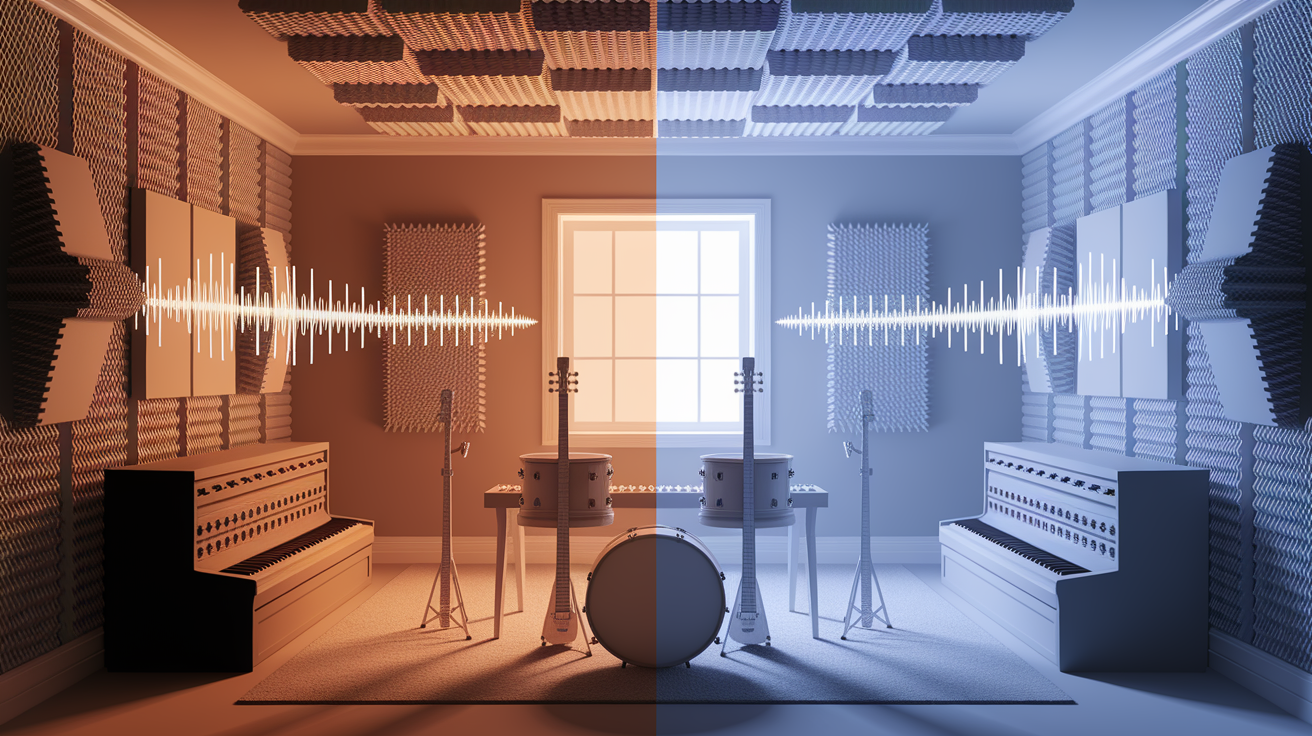Quick Answer: Soundproofing works by stopping sound waves from traveling from one place to another, using techniques like blocking gaps, adding dense materials, absorbing sound within walls, and separating structures to halt vibration transfer. By combining these methods, we can greatly reduce unwanted noise from the outside world—or keep our own noise from escaping.
Unlocking the Silence: How Soundproofing Works
Soundproofing is all about controlling how sound waves move through air and solid materials. Sound is simply a vibration—tiny back-and-forth movements of particles—that can easily slip through small openings, pass through walls, or travel along solid structures. According to acoustic engineering principles, noise can reach you in three main ways:

- Airborne noise – sound waves travel through the air (talking, music, barking dogs).
- Structure-borne noise – sound vibrations travel through solid materials (footsteps on a ceiling, machinery humming through walls).
- Flanking paths – sound sneaks around barriers through hidden routes such as ducts or shared framing.
The trick to quieting things down is to interrupt these paths—by blocking, absorbing, and isolating sound.
Blocking the Path of Sound
One of the simplest ways to reduce noise is to block direct paths. Because sound can slip through even the tiniest cracks, sealing gaps is essential for strong noise control. This includes:

- Using acoustic sealant around windows, doors, and baseboards to stop sound leakage.
- Installing solid-core doors instead of hollow doors for better noise isolation.
- Placing gaskets on door frames to create a tight seal.
Eliminating these gaps is especially important for controlling airborne sounds, which bend and slip through any open space.
Adding Mass to Reflect Noise
Mass is a soundproofing superhero. Heavy, dense materials resist movement when sound waves hit them, so they reflect much of the noise back where it came from. According to building acoustics research, the more mass a barrier has, the better it blocks sound. Common dense materials include:

- Drywall (adding extra layers)
- Mass loaded vinyl (MLV) sheets
- Concrete or brick
It’s like trying to push a massive boulder—it takes much more energy than pushing a lightweight object. In sound terms, this energy resistance means effective sound attenuation.
Absorbing Sound Within Cavities
When sound enters hollow spaces like wall cavities or ceilings, it can bounce around, creating reverberation. By filling those cavities with acoustic insulation—such as fiberglass, mineral wool, cellulose, or acoustic foam—you trap the sound energy and convert it into a tiny bit of heat.

- Porous absorbers work best for mid-to-high frequencies (like human speech).
- Resonant absorbers can target specific low-frequency noises (like bass sounds or machinery rumble).
Think of absorptive insulation as a sponge—only instead of soaking up water, it soaks up sound waves inside walls, reducing echoes and resonance.
Decoupling Structures to Halt Vibrations
Sound loves to travel through solid objects. This is why you can hear your upstairs neighbor’s footsteps—not just because of airborne sound, but because vibrations are traveling through the building’s frame. Decoupling breaks up this pathway by separating layers so vibrations can’t jump across easily.

Some decoupling techniques include:
- Building double walls with an air gap in between.
- Using resilient channels or isolation clips to mount drywall so it “floats” instead of touching studs directly.
- Creating staggered stud walls so the two sides don’t directly connect.
This vibration control step is essential for handling structure-borne sound such as impact noise from footsteps or moving furniture.
Your Path to Quiet: Putting Soundproofing into Practice
Effective soundproofing often combines these core strategies—block air gaps, add mass, absorb inside cavities, and decouple layers. A solid noise mitigation plan might involve:
- Sealing first – close all cracks and openings to eliminate easy sound leaks.
- Adding dense barriers – more drywall layers, MLV, or heavy curtains for reflection.
- Filling cavities – fiberglass insulation or acoustic foam for sound dampening.
- Breaking vibration paths – using resilient channels or floating floors for vibration isolation.
If you’re wondering whether you can truly block all noise, perfect noise isolation is rare—especially for very low frequencies—but with the right mix of materials and methods, you can dramatically reduce noise transmission and improve your room acoustics.













